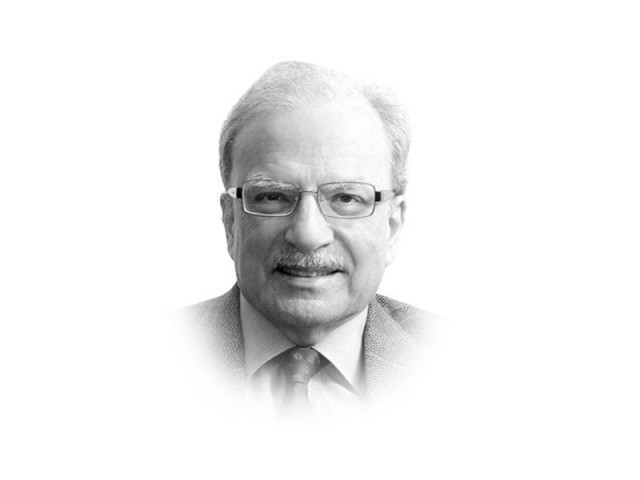Pakistan and the US doctrine
How should the policymakers in Islamabad prepare for the world that President Donald Trump has begun to shape?

The writer is a former caretaker finance minister and served as vice-president at the World Bank
A document laying down the US administration’s approach to the world is required by law. It guides Congress for the administration’s view of the world. The doctrine the White House released a few days ago echoed the ‘America First’ approach laid out by Trump is his inaugural speech on January 20. Much of the focus of the document was on China and Russia, the two countries that it said were “determined to make economies less free and less fair, to grow their militaries, and control information and data to repress their societies and expand their influence.” This was unfortunate “since after being dismissed as a phenomenon of an earlier century, great power competition returned.” There is irony in this statement since it is Trump’s America that is upturning the world order that had brought all countries into a framework based on international laws, rules and regulations.
Those who wrote the new policy must be aware of the work of the Greek historian Thucydides who centuries ago predicted that one great power replacing another in leadership role leads to conflict and open war. He presented his thesis when Athens had begun to challenge the dominance of Sparta. The result was war. The United States now faces a rising China, already the world’s second largest economy. Since the Chinese national income is likely to grow at a rate twice as high as that of the United States — six per cent a year against the United States’ three per cent — China will become the world’s largest economy in a decade or so. It is bound to translate its economic power into military strength. How should China be prevented from dominating the world the way the United States had done in more than 70 years since the end of the Second World War?
“China and Russia challenge American power, influence and interests attempting to erode American security and prosperity,” the security statement said. In his statement introducing the strategy document, Trump said intellectual and property theft would be targeted. This was a clear warning to China which American companies have complained about for years. “We will no longer tolerate trading abuse,” said the president.
Washington hopes to fight Beijing on several fronts. Xi Jinping, China’s powerful president who was recently given the status enjoyed by Mao Zedong, has spelled out what is being called ‘Globalisation 2.0’. The Road and Belt Initiative (RBI) spelled out in some detail, at a summit attended by scores of countries this summer, is designed to invest $1 trillion by China in 60 countries. By building, railways, ports, fibre optics cables, oil and gas pipelines, Beijing planned to dominate international commerce. A new global economy would emerge with China at the centre. The Americans had factored themselves out of the global economic equation by walking out of the Trans-Pacific Partnership (TPP) agreement painstakingly negotiated by Barack Obama, Trump’s predecessor in the White House. The TPP was meant to fashion the global trading system in the image of the United States. In fact, Obama had excluded China from the TPP as its economy was not free; it was still dominated by the state sector. By walking out of the agreement, Trump gave Beijing an opportunity to put its stamp on global commerce.
As articulated in the strategy document, Trump’s vision has four components: protecting the American homeland, protecting American prosperity, preserving peace through military strength and advancing the US influence. But some of these aims were contradictory. Unless the aim was to use its admittedly enormous military strength to establish its dominion over the globe, the only other way was to make the number of global institutions it had helped to establish even more powerful. These institutions could be used to constrain China’s global reach. RBI type of programmes could be regulated with the help of global institutions pursued within agreed legal frameworks. But Trump had begun to attack the international institutional structure, leaving the ground clear for an assertive power such as China to fashion the world to reflect its increasing economic power.
The Greek Thucydides is half right in so far as the tussle of power between the United States and China is concerned. There will not be hot war between the two as was the case with Sparta and Athens. But there is likely to be an economic war and the way it is being fought, America will come out the loser. Also on the losing side will be countries such as Pakistan that are not full participants in the global economy. For them to improve their place, they need a role-based institutional structure and not the one in which issues are settled bilaterally, which is the Trump preference.
Published in The Express Tribune, December 25th, 2017.
Like Opinion & Editorial on Facebook, follow @ETOpEd on Twitter to receive all updates on all our daily pieces.
















COMMENTS
Comments are moderated and generally will be posted if they are on-topic and not abusive.
For more information, please see our Comments FAQ